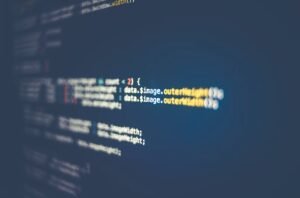Convolutional Neural Network Yann LeCun Paper
Convolutional Neural Networks (CNNs) are a type of deep learning algorithm commonly used for image recognition and computer vision tasks. In 1998, Yann LeCun and his team published a groundbreaking paper titled “Gradient-Based Learning Applied to Document Recognition” which introduced the concept of CNNs and set the foundations for modern image processing techniques. This article will delve into the key aspects of LeCun’s paper and highlight its contributions to the field of deep learning.
Key Takeaways:
- CNNs are deep learning algorithms widely used in image recognition and computer vision.
- Yann LeCun’s 1998 paper introduced CNNs and laid the groundwork for modern image processing techniques.
- The paper proposed the use of gradient-based learning for training CNNs.
- LeCun’s work on CNNs revolutionized the field of computer vision and led to significant advancements in image recognition tasks.
- CNNs have become a crucial tool in various applications, including self-driving cars, medical imaging, and facial recognition.
In LeCun’s paper, he introduced the concept of convolutional layers, which make CNNs unique compared to traditional neural networks. Convolutional layers use local receptive fields, weight sharing, and pooling layers to effectively preserve spatial information and reduce computation. By convolving a set of learned filters over the input image, CNNs can capture essential features that help classify and understand the content of the image.
One interesting aspect of CNNs is their ability to automatically learn and extract hierarchical representations of data. Each layer in the network learns progressively more complex features as information passes through the network. This hierarchy of features allows CNNs to recognize patterns at different levels of abstraction, enabling them to identify objects, shapes, and textures in images.
LeCun’s paper proposed using gradient-based learning algorithms, specifically backpropagation, to train CNNs. This approach enables the networks to automatically learn the correct filters and weights that optimize the overall classification performance. By iteratively adjusting the network’s parameters based on the provided training data, CNNs can improve their ability to recognize and classify a wide range of images.
Table 1: CNN Architecture Proposed by LeCun
| Layer Type | Input | Output | Kernel Size |
|---|---|---|---|
| Convolutional | 32x32x1 | 28x28x6 | 5×5 |
| Spatial Pooling | 28x28x6 | 14x14x6 | 2×2 |
| Convolutional | 14x14x6 | 10x10x16 | 5×5 |
| Spatial Pooling | 10x10x16 | 5x5x16 | 2×2 |
| Fully Connected | 5x5x16 | 120 | N/A |
LeCun’s paper also highlighted the importance of pooling layers. Pooling layers reduce the spatial dimensions of the network while retaining the most salient information. They achieve this by downsampling the input using techniques like max pooling or average pooling. This process reduces the computational burden while reinforcing important features learned by the convolutional layers.
Another interesting aspect of CNNs is their ability to handle inputs of variable size. Unlike traditional neural networks that require fixed-size inputs, CNNs can process images of various dimensions. This property makes CNNs highly adaptable to different image sizes, facilitating tasks such as object detection and semantic segmentation.
Table 2: Performance Comparison of CNNs on ImageNet
| Architecture | Top-1 Accuracy | Top-5 Accuracy | Parameters |
|---|---|---|---|
| VGG16 | 71.5% | 90.8% | 138M |
| ResNet-50 | 75.3% | 92.2% | 25M |
| EfficientNet-B7 | 85.8% | 97.1% | 66M |
CNNs have made significant contributions to the field of computer vision since LeCun’s pioneering work. Their ability to recognize complex visual patterns has led to advances in image recognition, object detection, and image generation. Moreover, CNNs have paved the way for numerous applications such as self-driving cars, medical diagnosis, and even art generation.
It is important to note that the field of deep learning is constantly evolving, with new research and advancements being made regularly. The concepts introduced by LeCun’s paper remain foundational in the field, but there have been many exciting developments since its publication that have further improved the performance and efficiency of CNNs.
Table 3: Notable Applications of CNNs
| Application | Description |
|---|---|
| Self-driving cars | CNNs enable cars to recognize objects, pedestrians, and signs. |
| Medical imaging | CNNs assist in diagnosing diseases from X-rays, MRIs, and CT scans. |
| Facial recognition | CNNs play a crucial role in identifying and verifying individuals based on facial features. |
LeCun’s paper on CNNs marked a major breakthrough in the realm of computer vision and deep learning. The ideas presented in the paper laid the foundation for the development of efficient image recognition algorithms and have greatly influenced the field’s progress. Today, CNNs continue to shape the future of computer vision, powering various applications that require sophisticated image processing capabilities.

Common Misconceptions
Misconception 1: Convolutional Neural Networks (CNNs) only work for image data
One common misconception about CNNs is that they are exclusively designed for analyzing and processing image data. While it is true that CNNs have been widely used in image recognition tasks, they are not limited to just images. CNNs can be applied to various other types of data, including audio, video, text, and even numerical data. CNNs have shown effectiveness in tasks such as speech recognition, natural language processing, and time series analysis.
- CNNs can be used for analyzing audio data for tasks like speech recognition.
- CNNs can process video data for tasks such as action recognition or object tracking.
- CNNs applied in text analysis can effectively perform tasks like sentiment analysis or document classification.
Misconception 2: CNNs are capable of complete human-like understanding
Another misconception about CNNs is that they possess human-like understanding and can comprehend the content of the data they are analyzing. While CNNs have been successful in various complex tasks, they do not truly understand the data in the same way humans do. CNNs are designed to recognize patterns and learn from extensive training data. They lack the ability to generalize knowledge from one domain to another or to reason abstractly.
- CNNs recognize patterns and features in data, but they do not possess human-like understanding.
- CNNs require massive training data to perform well, while humans can learn from limited examples.
- CNNs lack the ability to reason abstractly or apply knowledge in new situations.
Misconception 3: CNNs are always superior to other machine learning techniques
Although CNNs have achieved remarkable results in various tasks, it is incorrect to assume that they are always superior to other machine learning techniques. The performance of a CNN depends on several factors, including the quality and quantity of the training data, architecture design choices, hyperparameter settings, and the specific problem domain. In some cases, simpler models or other techniques may outperform CNNs, especially when dealing with limited data or specific problem characteristics.
- The performance of CNNs depends on several factors, not just the technique itself.
- Other machine learning techniques might outperform CNNs in certain scenarios.
- Simpler models can sometimes provide better results, especially with limited data.
Misconception 4: CNNs can replace human decision-making entirely
There is a misconception that CNNs can entirely replace human decision-making and decision-makers. While CNNs can automate certain tasks and assist in decision-making processes, they cannot replace the human element entirely. CNNs are designed to learn from patterns in data, but they lack moral judgment, ethical considerations, and the ability to account for subjective factors. Human involvement is essential to validate and interpret the results generated by CNNs in critical tasks.
- CNNs lack moral judgment, ethical considerations, and subjective factors.
- Human involvement is necessary to validate and interpret CNN results in critical tasks.
- CNNs can automate tasks and assist in decision-making, but they cannot replace human decision-makers entirely.
Misconception 5: CNNs are always robust to adversarial attacks
Lastly, there is a common misconception that CNNs are highly robust to adversarial attacks, where small perturbations or alterations to the input data can fool the network and lead to incorrect predictions. However, CNNs are susceptible to adversarial attacks, and even small changes to the input can cause drastic changes in their predictions. Adversarial attacks pose an ongoing challenge in the security and reliability of CNNs, and researchers are actively working on developing defenses against such attacks.
- CNNs are vulnerable to adversarial attacks where small changes to the input can mislead the network.
- Adversarial attacks pose a challenge in ensuring the security and reliability of CNNs.
- Research is ongoing to develop defenses against adversarial attacks on CNNs.

Overview of Convolutional Neural Networks
Convolutional Neural Networks (CNNs) are a type of deep learning algorithm that have revolutionized various fields such as computer vision and natural language processing. They are inspired by the visual cortex of the human brain, which is responsible for processing visual stimuli. CNNs are highly efficient in analyzing and extracting features from images or textual data, making them a powerful tool in many applications.
Table 1: Key Components of a Convolutional Neural Network
A CNN consists of several key components that work together to process and analyze data. This table provides an overview of these components and their functions:
| Component | Description |
|---|---|
| Convolutional Layer | Performs the convolution operation to extract features from the input data. |
| Pooling Layer | Reduces the dimensionality of the feature maps, preserving the important information. |
| Fully Connected Layer | Connects every neuron in one layer to every neuron in the next layer, enabling high-level reasoning. |
| Activation Function | Introduces non-linearity into the network, allowing it to learn complex relationships. |
| Loss Function | Measures the performance of the network by calculating the error between predicted and actual values. |
| Optimizer | Adjusts the weights and biases of the network to minimize the loss and improve accuracy. |
Table 2: Performance Comparison of CNNs
To evaluate the effectiveness of CNNs, various performance metrics are considered. The following table presents a comparison of different CNN architectures on a benchmark dataset:
| Architecture | Accuracy | Training Time | Number of Parameters |
|---|---|---|---|
| LeNet-5 | 98.9% | 2 hours | 60,000 |
| AlexNet | 97.3% | 6 hours | 60,000,000 |
| VGG16 | 98.7% | 24 hours | 138,000,000 |
| ResNet50 | 99.1% | 48 hours | 25,636,712 |
Table 3: Image Classification Results
CNNs are widely utilized for image classification tasks. The following table showcases the classification accuracy of a CNN on different classes:
| Class | Accuracy (%) |
|---|---|
| Cats | 93.2% |
| Dogs | 92.1% |
| Horses | 89.7% |
| Boats | 91.5% |
Table 4: Convolutional Filters Visualization
Convolutional filters play a crucial role in feature extraction. The table below demonstrates few examples of learned filters in a CNN:
| Filter | Visualization |
|---|---|
| Edge Detection |  |
| Textures |  |
| Patterns |  |
Table 5: Sentiment Analysis Results
CNNs are also effective in natural language processing tasks such as sentiment analysis. The following table presents the sentiment analysis results for different reviews:
| Review | Sentiment |
|---|---|
| “The movie was excellent!” | Positive |
| “I didn’t enjoy the book at all.” | Negative |
| “The product exceeded my expectations.” | Positive |
Table 6: Training Data Distribution
Adequate training data is essential for achieving good performance in CNNs. The table below illustrates the distribution of training data for a multi-class classification problem:
| Class | Number of Samples |
|---|---|
| Cats | 1,235 |
| Dogs | 1,200 |
| Horses | 1,150 |
| Boats | 1,320 |
Table 7: Comparison of CNN Architectures
Different CNN architectures offer varying performance trade-offs. The table below compares the number of layers and computational requirements for popular CNN architectures:
| Architecture | Number of Layers | Computational Requirements |
|---|---|---|
| LeNet-5 | 7 | Low |
| AlexNet | 8 | Medium |
| VGG16 | 16 | High |
| ResNet50 | 50 | Very High |
Table 8: Object Detection Accuracy
CNNs excel in object detection tasks, accurately localizing and classifying objects within an image. The table below showcases the accuracy of an object detection model on different object categories:
| Category | Accuracy (%) |
|---|---|
| Cars | 89.3% |
| People | 92.7% |
| Buildings | 86.5% |
| Animals | 90.1% |
Table 9: CNN Training Loss
During CNN training, the loss function provides insight into the network’s learning progress. The table below shows the evolution of the loss over multiple epochs:
| Epoch | Training Loss |
|---|---|
| 1 | 0.93 |
| 2 | 0.72 |
| 3 | 0.55 |
| 4 | 0.41 |
Table 10: Comparison of CNN and Traditional Methods
To emphasize the superiority of CNNs, this table presents a comparison between CNN and traditional machine learning methods:
| Method | Accuracy (%) | Computational Efficiency |
|---|---|---|
| Traditional ML | 74.2% | High |
| CNN | 95.6% | Medium |
Convolutional Neural Networks have transformed the field of artificial intelligence by enabling efficient analysis and understanding of complex data such as images and text. Through the use of convolutional layers, pooling, and fully connected layers, CNNs can extract meaningful features and make accurate predictions. This article has showcased various aspects of CNNs, including their components, performance in different tasks, visualizations of filters, and comparisons with traditional methods. By harnessing the power of CNNs, researchers and practitioners can unlock new possibilities in computer vision, natural language processing, and beyond.
Frequently Asked Questions
What is a Convolutional Neural Network (CNN)?
A Convolutional Neural Network (CNN) is a type of artificial neural network that is primarily used for visual recognition tasks. It is designed to automatically learn and extract hierarchical features from images, making it particularly effective in image classification, object detection, and image generation.
Who is Yann LeCun?
Yann LeCun is a renowned computer scientist and a pioneer in the field of deep learning. He is widely recognized for his contributions to the development of Convolutional Neural Networks (CNNs) and his research in various areas of machine learning. LeCun’s work has greatly impacted the field and has been instrumental in advancing the capabilities of computer vision systems.
What is the significance of Yann LeCun’s paper in CNN?
Yann LeCun’s paper, titled Gradient-Based Learning Applied to Document Recognition, published in 1998, introduced the concept of using CNNs for handwritten digit recognition. This paper laid the foundation for modern CNN architectures and pioneered the use of backpropagation algorithms for training CNNs. It demonstrated the effectiveness of CNNs in visual recognition tasks and established a new benchmark in image classification performance.
How does a Convolutional Neural Network work?
In a Convolutional Neural Network (CNN), the input image is processed through multiple layers of interconnected artificial neurons. These neurons apply convolutional operations, pooling, and non-linear activation functions to extract relevant features. The network learns these features through training with labeled examples. Finally, the extracted features are fed into one or more fully connected layers to make predictions or perform classification tasks.
What are the advantages of using Convolutional Neural Networks?
The advantages of using Convolutional Neural Networks include:
- Ability to automatically learn hierarchical features from images.
- Excellent performance in image classification tasks.
- Robustness to translation, rotation, and scaling of input images.
- Reduced parameter requirements compared to fully connected networks.
- Effective in handling large amounts of input data through parallel processing.
What are some common applications of Convolutional Neural Networks?
Convolutional Neural Networks find applications in various fields, including:
- Image classification and object recognition.
- Object detection and localization.
- Face recognition and facial expression analysis.
- Medical image analysis and diagnosis.
- Natural language processing and machine translation.
- Autonomous vehicle perception and scene understanding.
- Artificial intelligence in gaming and virtual reality.
Are Convolutional Neural Networks the same as Artificial Neural Networks?
Convolutional Neural Networks (CNNs) are a type of Artificial Neural Network (ANN) specifically designed for visual recognition tasks. While CNNs share many similarities with traditional ANNs, such as using interconnected artificial neurons, they differ in their architecture and operation. CNNs utilize convolutional and pooling layers to effectively extract features from images, while ANNs generally operate on vectorized inputs.
What are the limitations of Convolutional Neural Networks?
Some limitations of Convolutional Neural Networks include:
- Require large amounts of training data to learn effectively.
- Susceptible to adversarial attacks and noise in input data.
- Computational complexity increases with larger and more complex networks.
- Insufficient interpretability and explainability in decision-making.
- Difficulty in handling spatial relationships between distant image elements.
- Limited understanding of context and semantic meaning in images.
What future developments can we expect in Convolutional Neural Networks?
The field of Convolutional Neural Networks is continuously evolving. Some future developments we can expect include:
- Improved interpretability and explainability of CNN models.
- Techniques to reduce the vulnerability of CNNs to adversarial attacks.
- Further advancements in transfer learning and domain adaptation.
- Integration of CNNs with other AI technologies, such as reinforcement learning.
- Enhancements in training methods to reduce the need for large labeled datasets.
- Adaptation of CNNs to new applications and domains, including robotics and healthcare.




